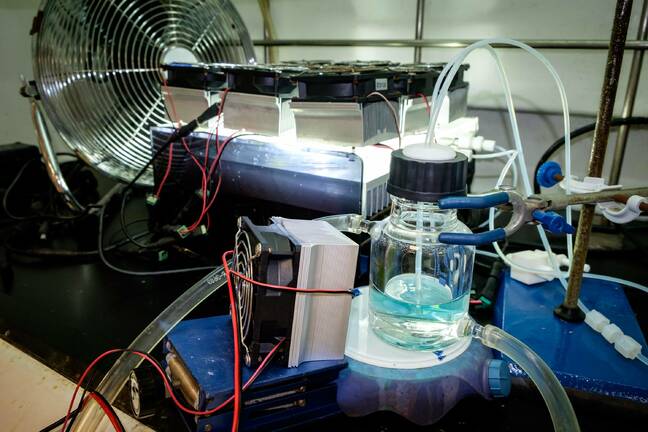Apples to apples: Boffins find a way to make e-waste edible
We're rubbish at recycling plastic, but Singaporean scientists think they can make more of it recoverable. Even the hard cases used in electronics
Researchers have developed a method to reuse plastics – including those employed in electronics, computers and packaging – as hydrogen fuel, food preservatives, and other products.
Polymer-pushers classify plastics into seven categories, the first of which describes the ubiquitous and commonly recycled polyethylene terephthalate (PET) used to make water bottles.
Plenty of PET is recycled. But in early 2022 the Organisation for Economic Co-operation and Development (OECD )found only nine percent of plastics was successfully recycled in 2019.
That figure is even lower for category seven plastics, mostly polycarbonates, which are hardly recycled due to fears they can release dangerous chemicals.
Polycarbonates are also used to make hard plastics, which is why they often end up in electronic devices, computers, or vehicles.
- Why these cloud-connected 3D printers started making junk all by themselves
- Tech giants warp eco standards to greenwash electronics, rake in cash
- When will regulators get serious on datacenter emissions reporting?
- Hacktivists attack Japanese government over Fukushima wastewater release
Associate professor Han Sen Soo of Singapore’s Nanyang Technological University, co-author of a recent article in the journal Chem, told The Register the research describes a method to break down carbon-carbon bonds using LEDs and a commercially available vanadium catalyst, after a dichloromethane solution first dissolves the plastic.
Soo told The Register the method could work for around 75 percent of global plastic waste.
"Gratifyingly, most of the common conventional plastics covering resin codes 2–7 ... were viable substrates with modest to good yields of carboxylic acid products," the article states.
As for the laboratory set up, Soo said it only cost around $21 in materials that can be acquired online. The most expensive components were nine computer fans attached to heatsinks above a quartz coil where the mixture of plastic, catalyst and solutions remained. Those fans and heatsinks were designed to cool off the heat emitted from the LEDs.
By-products of the process include formic acid and benzoic acid, which can be used to make fuel cells and liquid organic hydrogen carriers (LOHCs). LOHCs have recently been the subject of much attention for their potential in the energy sector.
"A liquid organic hydrogen carrier is a way to store hydrogen gas," explained Soo.
"Right now, hydrogen is actually attractive fuel and has been for a long time, because when you burn hydrogen the main product is water which is of course innocuous and doesn't really harm the environment," he added.
"But the big challenge, and the reason why we have shifted more towards using electric cars instead of fuel cell vehicles, is that one of the problems they never really figured out how to solve is how to actually get hydrogen into a form that you can easily pump into a car."
Formic acid can also be upcycled into leather tanning and cleaning agents. Benzoic acid can become chemical feedstock and plasticizer in blends for PVC. And both have uses in food preservatives.
Meaning quite literally, humans would not only be fuelling their cars with e-waste, they could also be eating it.
Apples to apples.
Soo admitted psychological barriers may mean people don’t rush to eat their phones, or other upcycled plastics.
"The plastics were converted into small molecule chemicals with a suitable cavitation process," reasoned the associate professor.
He conceded that upcycled plastics may be edible but will likely be used in other markets.
Currently those interested in this process and its scalability are mostly the oil and gas industry. Soo said the major costs in that regard lie in capital investments and infrastructure.
"It's a matter of whether they want to bite the bullet and invest in the future." ®

 Biting the hand that feeds IT
Biting the hand that feeds IT